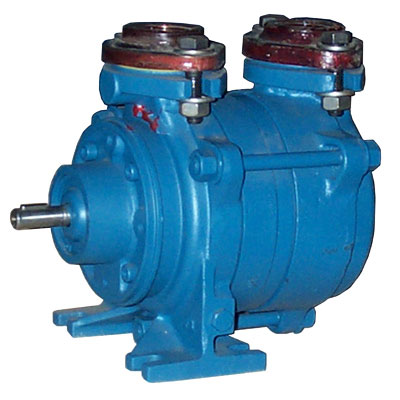
Pros
- Simple and compact structure
- Operating speeds are mostly designed to match electric motors synchronous speeds, making it possible to directly connect the compressor to the motor, eliminating the need for a gearbox device.
- Relatively steady flow of gas without pulsation
- No pressure fluctuations
- With no metal friction on the cavity surface of the pump, it requires no internal lubrication. As a result, the pump experiences less wear and tear.
- Simple and reliable operation, and easy maintenance
- Low operating temperatures
- Low vibration
- Low noise level, no need for expensive silencers
- On a rotating displacement pump, partial and full-load performance is reasonably good.
- Most importantly, when using a liquid compressor, the gas compression is isothermal, making it possible to pump flammable and explosive gas. Also, with no friction surface or exhaust valve, pumping gas with dust or a mixture of vapours and non-condensable gas becomes possible.
- Discharged gas can be 100% oil free
Cons
- Efficiency in the range of 30 to 45 percent is often lower than dry type or oil lubricated machines
- Water is required for service liquid or cooling.
As you can see, a liquid ring compressor has far more advantages than disadvantages. Although this rotating positive displacement device has some similarities to a rotary vane compressor, there are also distinct differences. Primarily, the liquid ring compressor utilizes a centrifugal rotor instead of sliding vanes. Rotary slide vane machines require lubricants such as oil therefore discharged gas is oil contaminated. Water consumption can also be recovered or recycled with liquid ring compressors.
Liquid Ring Compressor Principle
Induction motors usually drives the compressor rotor which is eccentrically mounted inside of a cylindrical casing for compressing the gas. In this case a liquid, typically water, gets fed into the compressor. With centrifugal force from the rotor, a moving cylindrical liquid ring forms against the interior wall of the casing. This ring creates multiple seals, filling the space between the vanes of the impeller. With that, compression chambers form.
Between the axis of rotation by the impeller and geometric axis of the casing drawn into the compressor through the inlet port, the gas becomes trapped inside of the compression chambers. With the rotation of the impeller liquid ring applies pressure to the trapped gas thus reducing the volume of gas. Once compressed, the gas exits the discharge port.
Superior Products
For superior products, PFS Pumps is an unbeatable source. Whether you have questions or would like to get an estimate, please give us a call, and one of our representatives will be happy to assist.
